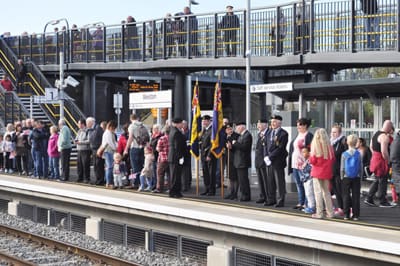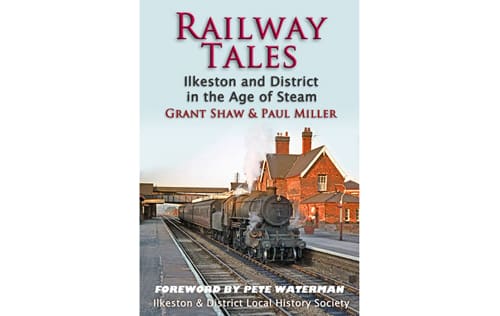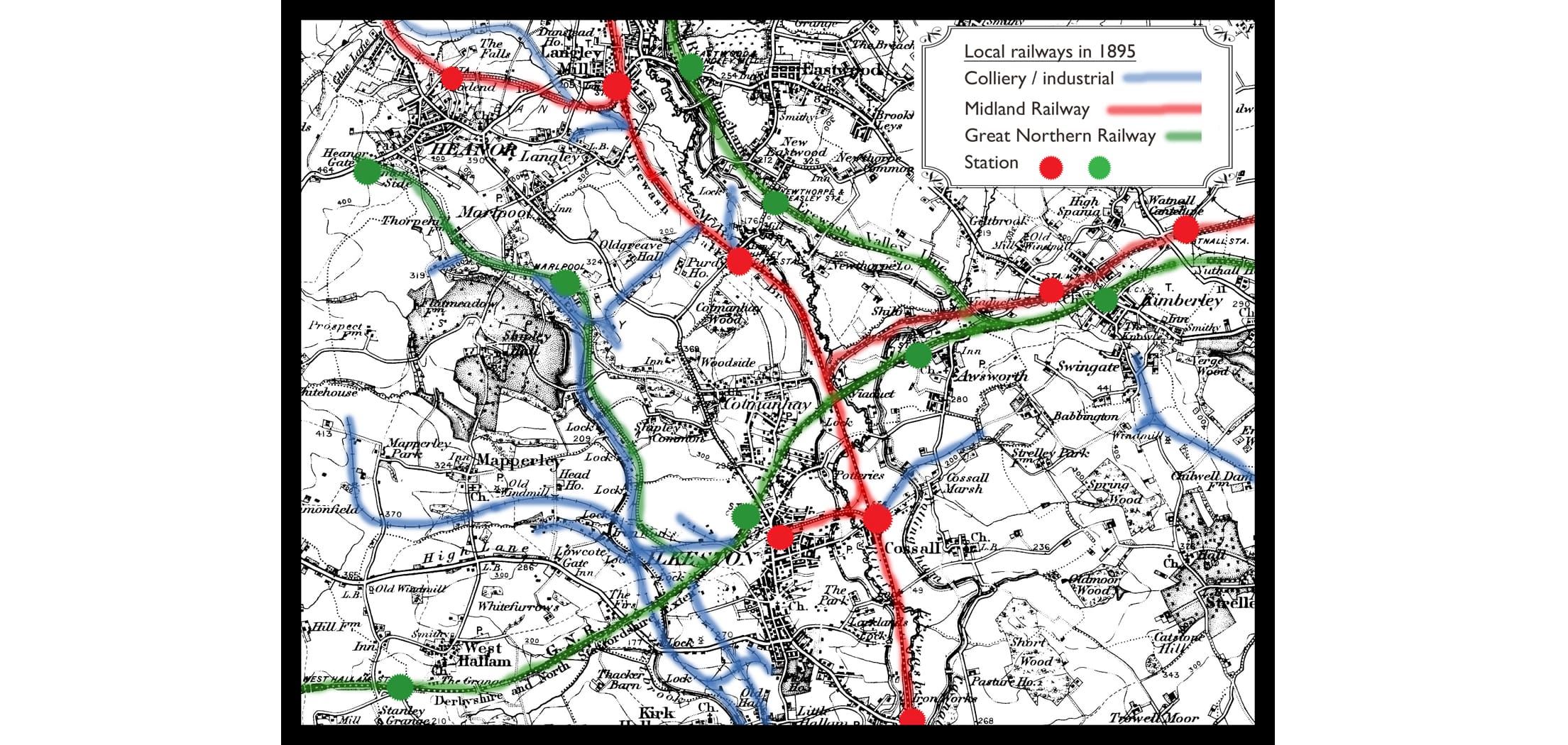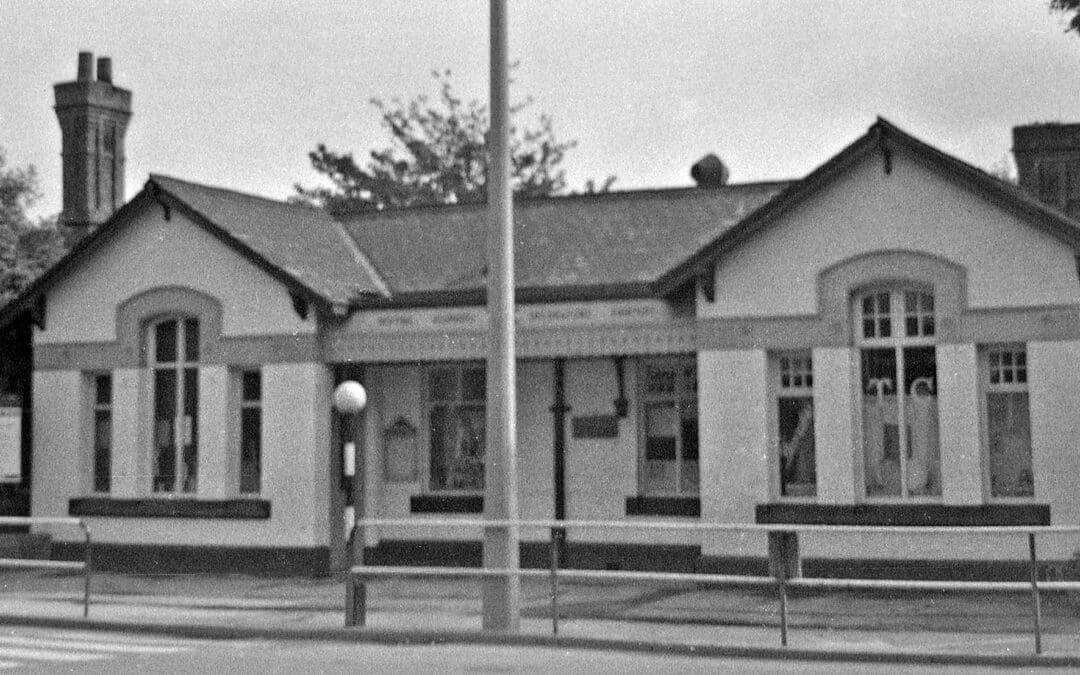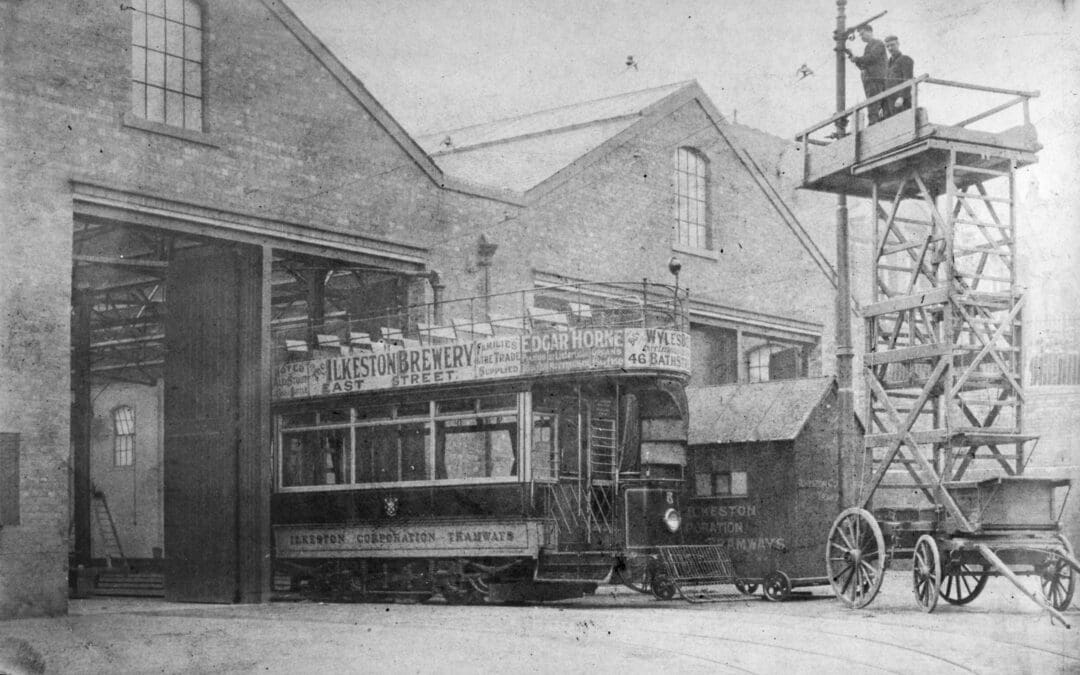(A longer read)
The provision of a railway along the Erewash Valley was first discussed as early as 1824, but for various reasons that railway was never built. Commercial pressures ensured that the idea of a railway through the Erewash Valley remained an attractive one.
At this time, the only way for Erewash Valley coal to reach a large market was by canal. By 1832, colliery owners’ concern was growing over the charges levied by the canals. Following a meeting at the Sun Inn in Eastwood on 16th August 1832 those colliery owners, Edward Miller Mundy of Shipley Hall included, decided to build their own railway. After much argument and changing of plans, building of the new Midland Counties Railway started in 1837. Ironically, the final route avoided the Erewash Valley for political and strategic reasons. Mr Miller Mundy and his associates had to wait another ten years before a main line through the valley was constructed by the Erewash Valley Railway Company, which was taken over by the Midland Railway as the new line opened in 1847. By carrying valuable coal traffic, the line soon made a profit.
Two stations were constructed to serve Ilkeston. The one on the main line became known as Ilkeston Junction, and when first built it was literally in the middle of nowhere, with no road leading from it to either Cossall or Ilkeston. Passengers would use farm tracks and the canal towpath to reach its isolated location. The other station was at the northern end of Bath Street in the town proper, and was later known as Ilkeston Town. This station was connected to the main line by a short branch from Ilkeston Junction Station, the route of which roughly followed the present Millership Way and which was served by horse-drawn railway carriages for some years.
By 1853, three trains were running daily each way between Nottingham and Ilkeston via Long Eaton. Passengers, though were never the main consideration. Local newspapers contain many letters of complaint in the 1850s and 60s regarding the poor standard of waiting rooms and other facilities at the local stations and even about the rudeness of the staff. Some of the Midland Railway’s Directors, their General Manager and Engineer visited Ilkeston in 1860 to discuss rail users’ concerns, although little seems to have been achieved except a good shouting-match between opposing groups of locals, to the visitors’ amusement.
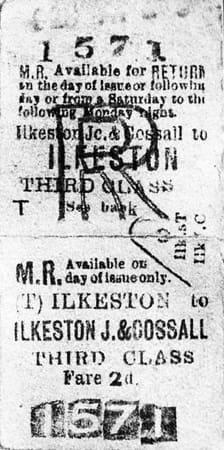
The Junction Station was rebuilt on the Ilkeston side of the tracks in 1867, in the fork formed where the Town Branch curved away to the west. At last, in 1870 a proper road to it (‘Station Road’ and/or ‘Station Street’) was finally built. As soon as the road was completed in May 1870, the Midland closed their Ilkeston Town Station to passengers entirely – much to the disgust of the Ilkeston Pioneer newspaper and despite a ‘numerously signed’ petition. This left locals using Shipley or Stanton Gate stations, which were apparently much preferred to the Junction. The Midland were later forced to reverse their decision by the arrival of a serious competitor.
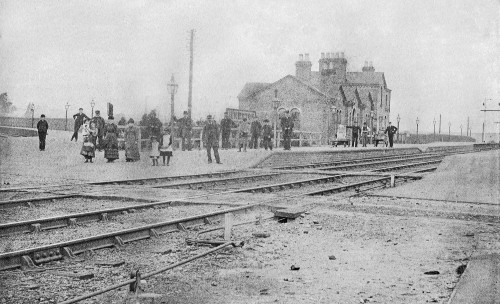
Ilkeston Junction Station in about 1870 (Angus Townley)
For some years the Great Northern Railway had uneasy agreements with the Midland for the use of strategic sections of Midland track and vice versa. The two companies were always looking for an advantage over each other, particularly when it came to the valuable coal trade. Eventually, the GNR decided to bypass the Midland and build its own line linking Stafford (using existing track) via Egginton Junction through Derby to reach the coalfields and Nottingham. The Egginton to Nottingham part was locally known as the ‘Friargate Line’ after Derby’s new Friar Gate station, and other stations were built at Breadsall, Stanley (soon renamed ‘West Hallam’), a larger station at the southern end of Heanor Road, Ilkeston (later known as ‘Ilkeston North’), Awsworth and at Kimberley. A large goods depot was also built between Heanor Road and Cotmanhay Road at Ilkeston. The line passed over Cotmanhay Road at the Castle Bridge near Granby Park and over the Midland’s Erewash Valley line by the impressive Bennerley Viaduct, which happily still stands and is one of only two surviving wrought iron viaducts in the country. (For more information, please see the Friends of Bennerley Viaduct website.)
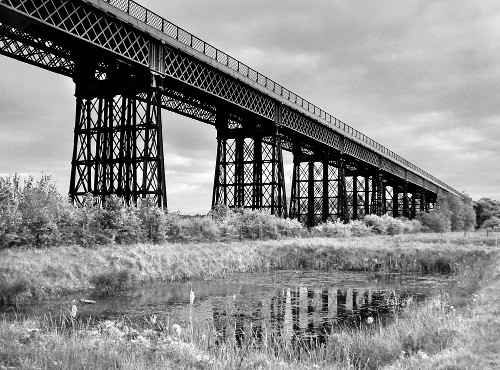
Bennerley viaduct today (Grant Shaw)
Passenger services commenced on 1st April 1878 and from the start the new Ilkeston station was a threat to the Midland, who re-opened their Town station in July 1879 with an upgraded branch line and improved passenger facilities and goods yard. As with the Midland, the GNR line’s main business was mineral traffic, but there was also some trade in milk from the area west of Ilkeston. Although passenger traffic was never very heavy on parts of this line, it provided a valuable link for the communities through which it passed.
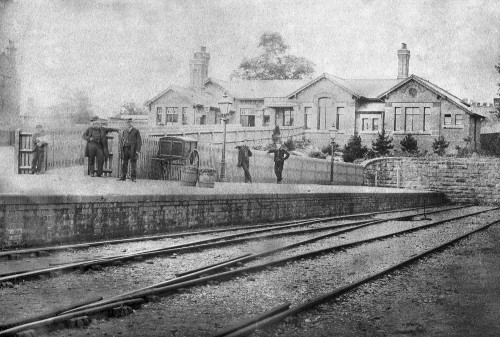
Ilkeston Town station in about 1880 just after rebuilding (Angus Townley)
The Midland responded to the GNR threat by building more branches and connecting lines. The Shipley Colliery Company’s pits were linked to the Midland Railway at Stanton Gate via a line opened in 1870. In 1875 a cut-off from Trowell to Radford was opened to allow quicker access to Nottingham, followed by a branch from Bennerley Junction to Kimberley and Watnall in 1879.
In 1882 the ‘Ilkeston and Alfreton Railway Company’ surveyed a route which passed through Shipley, Heanor, Ripley and Swanwick. Nothing came of this, but the GNR re-used part of the route when it made an extension from just west of Ilkeston North station through what is now Shipley Country Park to Heanor Gate, where the line ended. There was an intermediate station named Marlpool just north of The Field at Shipley and this opened for passenger traffic in 1891. The GNR also opened its Shipley (Nutbrook Colliery) branch for coal traffic in 1886.
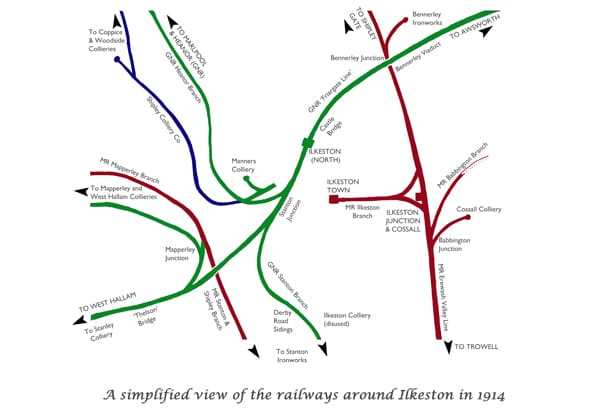
By 1910 Derby could be reached from Ilkeston in fifteen minutes or Nottingham in fourteen using the GNR, whereas Midland services took twenty-two to Nottingham and over an hour to Derby as the Midland route involved a change and often a long wait at Trent Junction. Before the First World War, Erewash Valley communities were well served with up to fifty Midland services each way every day using various routes, terminating usually at Ilkeston or Chesterfield.
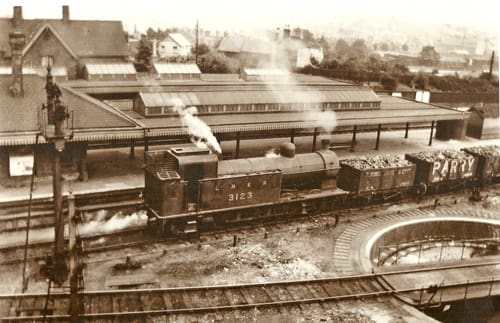
The railways were taken into government control during the Great War, which caused a serious running down in track and rolling stock due to more intensive working and delayed maintenance. After the war, the 1921 Railways Act reduced the many railway companies to just four main operators. Under this ‘grouping’, the Midland became a major influence in the new London, Midland and Scottish Railway (LMS) and the Great Northern was absorbed into the London and North Eastern Railway (LNER). Depression in the mining industry in the 1920s and 30s and the popularity and expansion of tram and bus services began to seriously affect the profitability of the local lines. The former GNR Heanor branch effectively closed to all but a workmen’s passenger service and goods traffic in 1928.
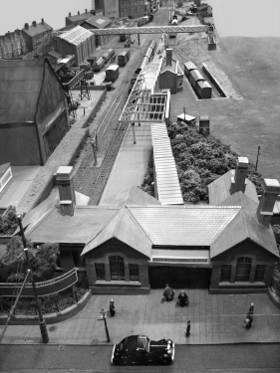
Bulwell Model Railway Club’s model of Ilkeston
Town Station in 1930 (Grant Shaw)
The Second World War led to another extended period of government control, and the railways were left in a very poor condition indeed by the war’s end. Clement Attlee’s Labour government transferred the railways along with other major sectors of inland transport to public ownership under the Transport Act 1947, and British Railways came into being. The LNER’s Friargate Line became part of BR’s Eastern Region and the LMS’s Erewash Valley Line part of BR’s London Midland Region.
Passenger services were finally withdrawn from Ilkeston Town Station in June 1947, but goods traffic continued for some years. Shipley Gate station was closed in 1948, not long after nationalisation. Although there were still eight local trains daily each way along the main Erewash Valley line in 1955, intermediate stops such as Trowell, Stanton Gate and Ilkeston Junction were quietly cut out in the 1960s and these services had all ceased to run by 1967. By 1968 those stations had closed. Ilkeston North station on the ‘Friargate Line’ saw its Sunday passenger service withdrawn in November 1962.
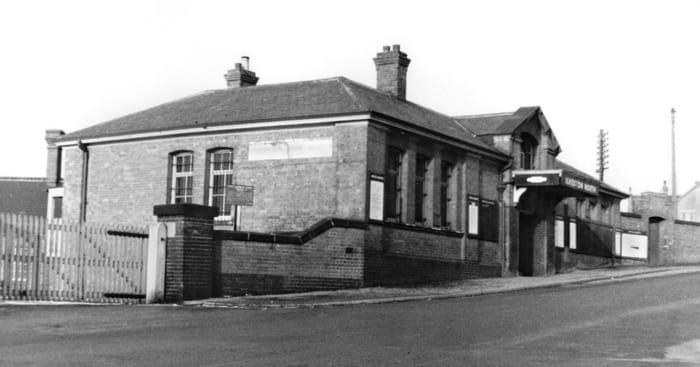
Following the first Beeching Report in 1963, despite substantial and well argued opposition from the Ilkeston Borough Council and neighbouring Parish Councils, local business and individual railway users all passenger services were ended here and at West Hallam and Awsworth in September 1964. A ‘replacement bus service’ was laid on between Nottingham and Derby via Ilkeston and Ilkeston North station closed forever on 27th May 1968.
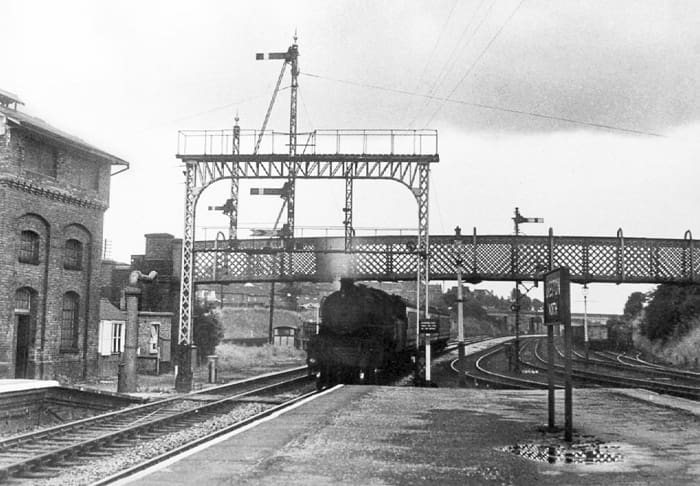
The track was taken up around 1970 and the remaining station buildings were demolished some ten years afterwards. Landmark local bridges were removed at High Lane East (‘Thelson Bridge’) and Cotmanhay Road (‘Castle Bridge’) and others demolished and cuttings filled in so that by the early 1980s there was very little to show that the former GNR line ever existed locally, although it had been fully functional less than twenty years earlier.
The former Midland Railway’s Erewash Valley Line still remains a major through route for traffic between Sheffield and London. After many false starts and delays, a new station on the site of the old ‘Ilkeston Junction’ site and simply named ‘Ilkeston’ opened on 23rd March 2017.
